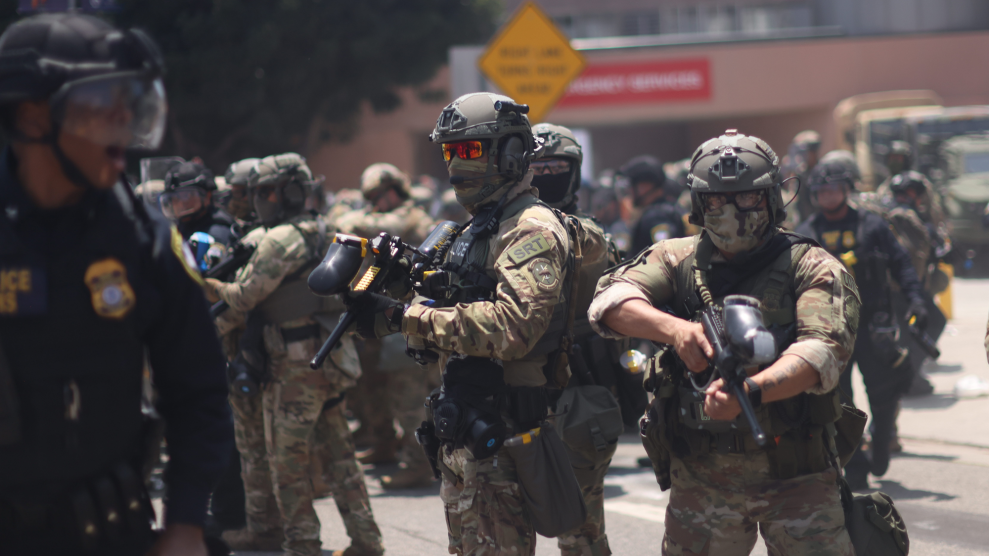Curious news from the Arab press by way of Andy Worthington and bmaz over at emptywheel: multiple Arabic-language sources and Algeria’s English-language Ennahar Online are reporting that Ibn Shaikh al-Libi, who the Bush administration once cited as the link between Al Qaeda and Iraq, has died in a Libyan prison. There’s been no independent confirmation of this news yet. If true, it’s an interesting coda to the story of one of the first Al Qaeda members to be captured and tortured by the United States—and the person who provided one of the key pieces of “evidence” tying Saddam Hussein to Osama Bin Laden.
Al-Libi—whose real name was Ali Abdl Aziz al-Fakhiri—was picked up in Afghanistan on or around December 18, 2001. After that, it was the same story you’ve heard many times: the FBI tried traditional methods of interrogation and found some success, but the CIA wasn’t satisfied, and took control of the prisoner. One of the most disappointing things to those pushing for war with Iraq had to be that al-Libi hadn’t said anything tying Saddam to Al Qaeda. That would change.
Al-Libi was sent to Egypt, where he was subjected to torture, including, as David Corn and Michael Isikoff reported in their book Hubris, a mock burial. Suddenly, al-Libi was singing a different tune. He told interrogators that Bin Laden had sent two Al Qaeda members to Iraq for training in weapons of mass destruction.
From the beginning, some members of the intelligence community doubted al-Libi’s “information.” A DIA analyst warned in February 2002 that al-Libi “lacks specific details on the Iraqis involved, the CBRN [chemical, biological, radiological, or nuclear] materials associated with the assistance, and the location where the training occured,” Corn and Isikoff reported in their book. “It is possible he does not know any further details; it is more likely this individual is intentionally misleading the debriefers.” In other words, the Bush administration was warned in February 2002 that al-Libi was probably just telling them what they wanted to hear. “They were killing me,” he would later tell the FBI. “I had to tell them something.” More from Corn and Isikoff:
The DIA analyst was adhering to the commonsense view held by most of the U.S. counterterrorism community. Why would Saddam pass along his chemical and biological know-how—presumably his most cherished possessions—to a terrorist group that owed its allegiance to someone else?
Those weren’t the only doubts raised about al-Libi’s allegation. In June 2008, the Senate Intelligence Committee released a report indicating that the CIA itself had raised doubts about al-Libi’s reliability. The Senate report revealed the existence of a still-classified August 7, 2002 CIA report titled “Terrorism: Credibility of Ibn al-Shaykh al-Libi and the Information He has Provided While in Custody.”
The report made clear that al-Libi could not be trusted. “Questions persist about [al-Libi’s] forthrightness and truthfulness,” the agency wrote. “In some instances, however, he seems to have fabricated information.” Nevertheless, the Bush administration moved forward, using al-Libi’s fabrications to make the case for war with Iraq.
Two months after the CIA report, President Bush would tell an audience in Cincinatti that “We’ve learned that Iraq has trained al-Qaeda members in bomb making and poisons and deadly gases.” A few months later, Colin Powell would echo that same claim before the UN Security Council: “I can trace the story of a senior terrorist operative telling how Iraq provided training in these [chemical and biological] weapons to al-Qaeda,” Powell said, adding, “Fortunately, this operative is now detained, and he has told his story.” The operative was al-Libi.
Six weeks later, America was at war.













